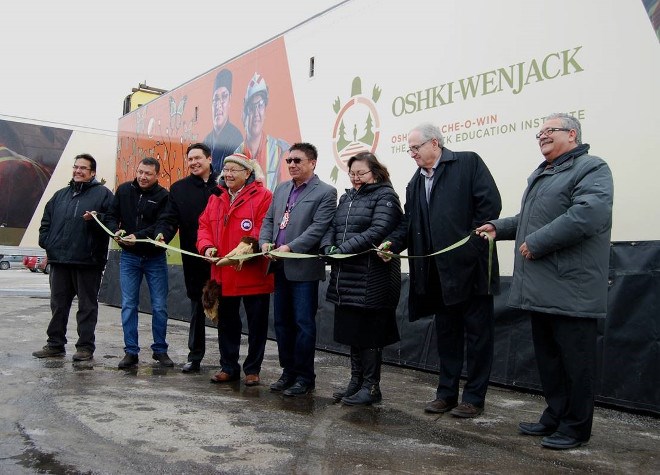In his past dealings with industry, Gordon Kakegamic discovered Indigenous people were often relegated in serving as helpers to the skilled tradespeople working on area infrastructure projects.
“Any issues that come up, they’ll fly in a qualified tradesperson to deal with the issue and they fly out,” said the innovation and training coordinator with Oshki-Pimache-O-Win Wenjack Education Institute.
Oshki is out to change all that by empowering First Nation communities in the creation of their own trained workforce.
In January, the Thunder Bay training institute took possession of a mobile trades trailer to make apprenticeship training available to all the 49 communities of the Nishnawbe Aski Nation (NAN).
“There’s a big demand in our communities for skilled trades, especially when it comes to resource development projects,” said Kakegamic.
Previously, Oshki had an arrangement to use Cambrian College’s trades trailer to deliver a pre-trades course to introduce young people to entry-level jobs in the mining industry.
Though always popular, Oshki and the Sudbury college couldn’t always coordinate their schedules to book the trailer.
It prompted Oshki to submit a proposal to the Ministry of Innovation, Science and Economic Development to secure their own customized trailer two years ago to begin training up a regional workforce of journeypersons.
“We want community members to be qualified tradespeople who live and work in their own community, looking after their own infrastructure but also be mobile and working in remote sites, like Musselwhite Mine, the upcoming Ring of Fire (mine development), any resource development projects they can get employment," said Kakegamic.
With a fully-equipped trailer at their disposal, the focus is on delivering Level One apprenticeship training for six trades: welding, carpentry, plumbing, electrical, mechanical and millwright.
“Any infrastructure projects will use those six trades,” said Kakegamic. “Even building a road into the Ring of Fire will require qualified tradespeople.”
The $1.8-million specialized equipment trailer, built by Innovative Trailer Design of Toronto, is actually two trailers which can be arranged into a t-configuration at a selected training site.
One trailer houses lab or classroom space, with the other doubling as a supply trailer and workshop space.
With expandable walls, more than 1,800-square-feet of workspace is created, outfitted with 12 welding stalls, lathes, and a band saw cutter, among other tools.
Throw in a $200,000 haul truck and the total package tops out at $2.2 million.
“It’s a very good investment,” said Kakegamic. “Our communities really need to stop the trend of industry training our community members to become helpers. We want to train them to be fully qualified tradespeople.”
Oshki is working on an agreement with Northern College of Timmins to deliver the training.
Kakegamic hopes to have the trailer on the road by April to demonstrate it to the NAN communities.
The eventual plan is to deploy the trailer in a community or position it in a regional location – like the Musselwhite Mine – where groups from remote communities can fly in from a short distance to take training.
With community demand expected to be high, Oshki is issuing a call for expressions of interest to book training sessions in advance.
“You need to plan a year ahead of time where the trailer’s going to be deployed,” said Kakegamic.
Completing a Level-One apprenticeship program takes eight weeks or 240 hours.
“We want our trailer parked in any one spot for a maximum duration of 10 to 12 weeks."
A committee will select five training projects per year. There are plans to bring the trailer to the Sioux Lookout district where the western NAN communities will be participating in the upcoming construction of the Watay Power transmission line project.
Oshki is also working with Wasaya Airways and the Ontario Ministry of Transportation to deliver the mechanical side of an aviation management program, said Kakegamic.
“They want to train community members to look after the airport infrastructure in the communities up north.”
To further market and promote the trailer, Kakegamic is attending the Prospectors & Developers Association of Canada conference in March to troll for industry sponsorship dollars to take it on a tour of northwestern Ontario.




